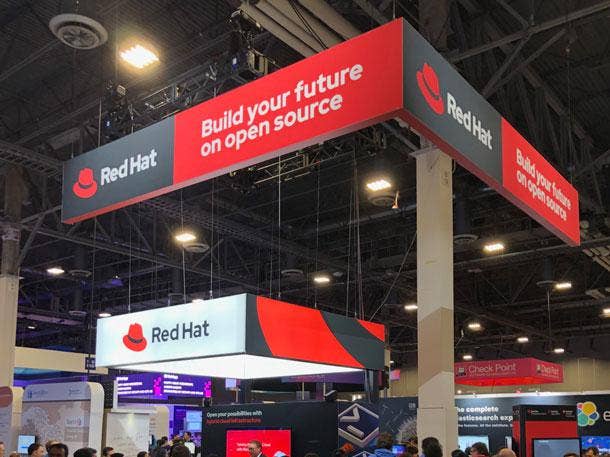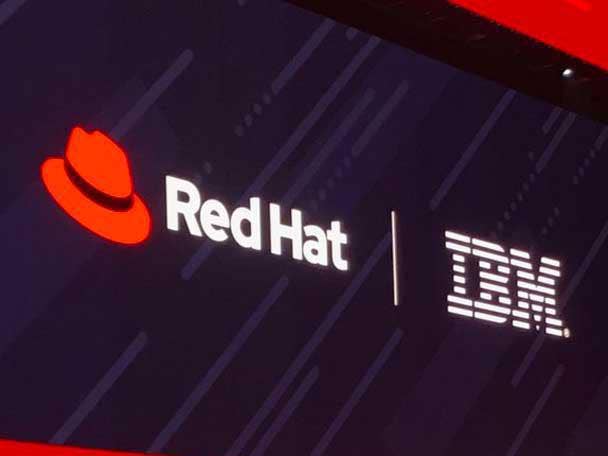Red Hat Chairman Paul Cormier: ‘Even A Direct Account Will Be With Partners’
‘We pared down by two-thirds the number of accounts we’re going to call on directly—and even a direct account will be with partners. But everything else will be even directly serviced by our partners,’ says Red Hat Chairman Paul Cormier.

Red Hat Chairman Paul Cormier
Trading his Red Hat CEO title for that of chairman, Paul Cormier plans to remain an active force in growing Red Hat’s business—a feat, he told CRN, that needs to be “partner-driven.”
“It’s definitely partner-driven,” Cormier said. “I would like to tell you we had this big revelation. But it’s got to be partner-driven. … Hybrid cloud is not a product, it’s an architecture. And it takes various products from companies like us as well as partner companies. We can’t do it all. It takes consulting services. It takes all kinds of partners to deliver that.”
In July, Cormier vacated the CEO role for 16-year Red Hat employee Matt Hicks to take on the role of CEO. Cormier has worked at Red Hat for more than 14 years, taking on the CEO position in 2020 when former CEO Jim Whitehurst moved up to president of IBM.
[RELATED: IBM’S RED HAT NAMES MATT HICKS AS NEW CEO, HINTS AT FUTURE ACQUISITIONS]
Is Red Hat Enabling Channel Partners?
In an interview with CRN, Hicks also said that he sees partners as a critical component of going to market.
“Our partner community has always been a critical part of delivering to customers,” Hicks said. “We’re just seeing more and more momentum in our focus on open hybrid cloud growth. And whether that’s in the enterprise space of customers moving from on-prem to cloud and from one cloud to multi-cloud, or if it’s from the inclusion in edge where there’s more industry-specific focus—partners are a critical link, whether it’s the MSPs or they’re system integrators … so I think that will only increase as we go forward.”
Cormier will continue to have an office at the Raleigh, N.C.-based open-source software provider. He’ll work with customers to help grow Red Hat’s presence in multi-cloud and edge IT environments, he said.
Red Hat pared down the number of direct customer accounts by two-thirds, Cormier said. And even direct accounts might have a partner connected.
“It’s not only partners who deliver our pieces of the puzzle, it’s partners who complete solutions that we’re just not going to have the bandwidth to do. So that’s the wave that we have to drive and stay in front of. Because if we don’t, if we don’t do it that way, we’ll get overrun by the wave.”
IBM executives have praised Red Hat for the revenue it brings in and for helping IBM build expertise in hybrid cloud, taking a different path than public cloud giants such as Amazon Web Services and Microsoft.
Mark Wyllie, CEO of Boca Raton, Fla.-based IBM and Red Hat partner Flagship Solutions Group, told CRN that Red Hat automation-focused subsidiary Ansible has been helpful for his business in supporting customers without having to dedicate resources to developer work.
Wyllie said he’s happy to hear about more efforts from Red Hat to engage partners earlier in the sales cycle.
“That’s taking some time to happen, but we’re seeing signs that it is moving forward,” he said.
Here’s what else Cormier had to say to CRN, including the move to pare down by two-thirds the number of accounts Red Hat will call on directly.

What’s your message to channel partners as chairman of Red Hat?
It’s really a much more focused approach with partners. Hybrid cloud is not a product, it’s an architecture.
And it takes various products from companies like us as well as partner companies. We can’t do it all. It takes consulting services. It takes all kinds of partners to deliver that.
And so we really talked about that a lot at the Summit in May. That was a real focus for us.
We pared down by two-thirds the number of accounts we’re going to call on directly—and even a direct account will be with partners. But everything else will be even directly serviced by our partners.
We really made that very, very clear. We put a new ecosystem SVP [senior vice president] in place, Stefanie Chiras, who came from the products group. Because it’s not only a partner-led thing, it’s not only an architecture, it’s very much a technical solution, as well.
So that that will continue. We just started with that focus not that long ago. And that’s really been a really cornerstone of the strategy going forward.

What are some of your immediate goals as chairman?
Lots of chairman roles are ceremonial. … [But] I’m going to continue to have an office here. My plan is to be here.
We saw the move to hybrid before, I’ll say, pretty much anyone. Because it’s been a Linux, open-source world in the cloud space. And so that’s what we do.
In the beginning of cloud, we had so many CIOs we work with say, ‘Only 1,000 of my applications are going to one cloud next week.’
And it didn’t work out very well for most of them unless they got into it and realized what was involved … that’s now, solidly, it’s going to be a hybrid world. We’ve been building on that for eight or nine years.
One of the things I also focused on when I took over as CEO is, we wanted a three-year living strategy that we not only documented and put out there, but we ran the business by, that we executed to.
We’ve done that. We have that. It’s all around hybrid, multi-cloud, including all the way out to the edge.
So I’m going to help a lot of our customers make that a reality for them. I’m going to work closely with a lot of our customers. We have a strategic advisory board, for example, I’m going to run the strategic advisory board.
I’m going to work with the management team on various projects, both internally and externally as well. So I intend to bring together our strategy with the market. It’s a perfect time for that because I think hybrid is now getting to be fairly well understood and the norm, more so than even over the last couple of years.
So those are the areas I’m going to focus on, bringing that strategy to life, working with the management team, working with our customers, and continuing to work with a lot of the partners that I’ve known for some 20 or 30 years.

How do you view Red Hat’s relationship with the hyperscalers?
The hyperscalers, I mean, if a customer wants to go all in on one hyperscaler with all of their options—if that’s what they want to do, then we’re probably not the right solution for them.
I don’t think that’s a big part of the market, to tell you the truth. That’s not what we see.
Having said that, the hyperscalers, we have a great partnership with them because we bring workloads to them. But … I don’t see in the future that they’re going to be able to work well across each other. It’s like putting a Dell part in an HP box.
And I don’t think you’re going to see them come on-premises for the applications. … We sort of, kind of compete, but not really. We’re more partners that compete. I think the only one that was trying to do a similar thing to us was VMware.
But they’re going through their own time right now. We’ll see what end of the pipe they come out on.
We have a unique, great relationship with the hyperscalers. We bring business to each other.

Do you see the relationship between Red Hat and IBM changing?
A lot of people say, ‘Why now [change roles]?’
Look, when we first started this three years ago, IBM had never done an acquisition like this.
And I’ll be frank, there were a lot of naysayers both inside and out. And I think one of my big goals coming into this three years ago was to make sure we understood how to work with IBM, they understood how to work with us. We knew where the red line was. We knew where the blue line was.
[IBM Chairman and CEO] Arvind [Krishna] has been instrumental in that. He sees the value in that as much as we do. And I think we’re really solid. It’s not just Arvind and the senior leadership team at IBM that understand it. It’s fairly well into the organization that understands the right model.
That’s one of the reasons why it was a good time. Because I think we’ve been very successful in that partnership and keeping its neutrality.
What will help with open source continuing to penetrate the enterprise IT market?
It’s definitely partner-driven. I would like to tell you we had this big revelation. But it’s got to be partner-driven.
Hybrid is too big. Look, the things we do don’t happen overnight. Cloud has been here for, what, 14ish, 15ish years?
Depending on what survey you look at maybe 25 percent, or maybe 30 percent. I don’t care if it’s 50-50, 60-40, 40-60, it’s going to be a hybrid world for as far as we can see.
That is where it’s all going and we have to not only ride but drive that wave.
And it’s not only partners who deliver our pieces of the puzzle, it’s partners who complete solutions that we’re just not going to have the bandwidth to do. So that’s the wave that we have to drive and stay in front of. Because if we don’t, if we don’t do it that way, we’ll get overrun by the wave.

Does Red Hat continues to hire?
We continue to hire. We’ve got an eye on it. … One of the things that we’ve done not just coming out of Summit, but we’re tweaking the model on the go-to-market side as well.
So more emphasis on the partners, the ecosystem, etc. More emphasis on accounts we don’t cover directly. So that has shifted some of the type of hiring as well.
Is IT spending holding in this economy?
Similar thing through COVID.
A lot of our customers told us, ‘Look, we can’t stop here. This is about getting efficiency and moving to a hybrid architecture.’
So that’s why I think you saw a lot of software companies’ business continue and grow through COVID. Similar thing. If we stop now, we’re going to come out of the other end of this thing behind.